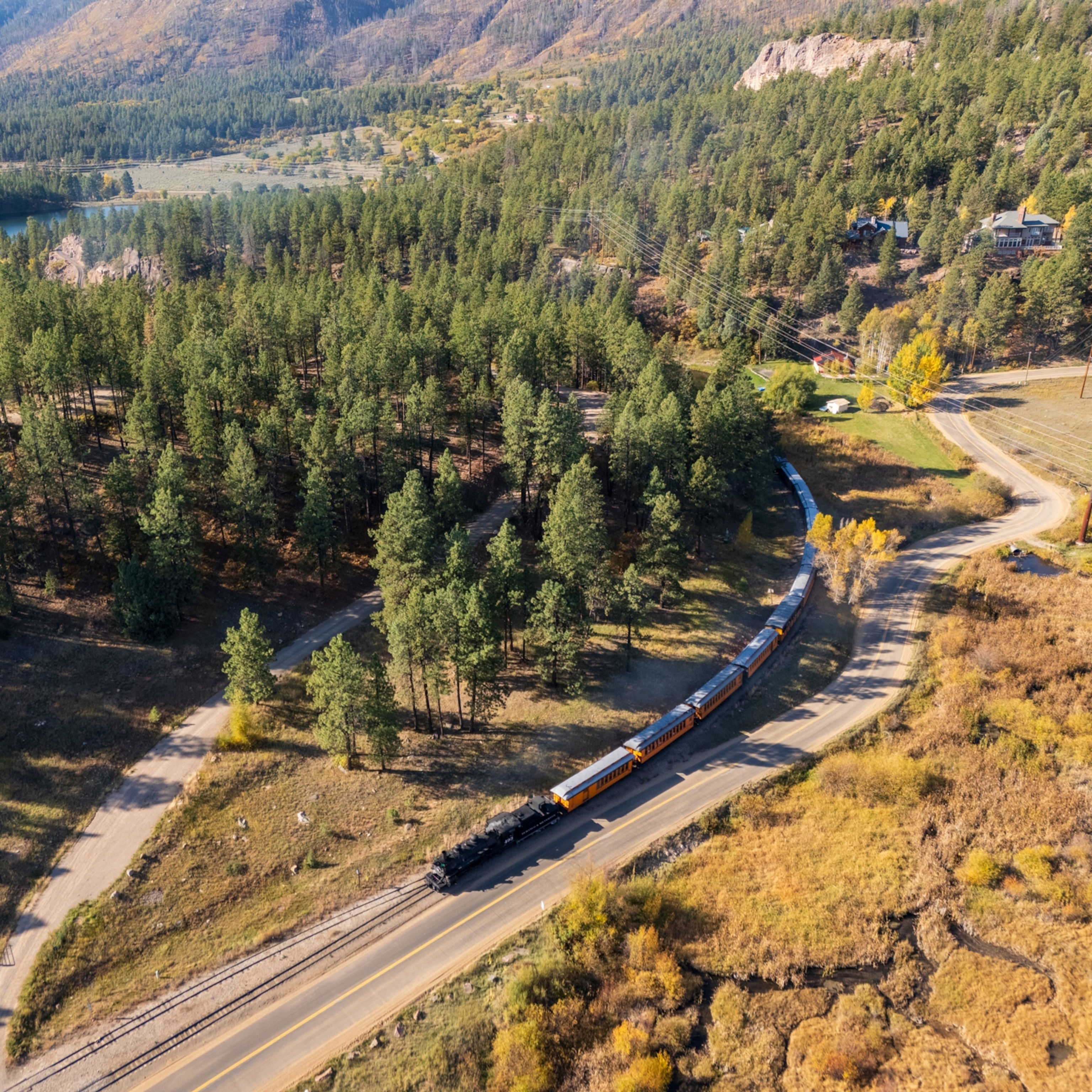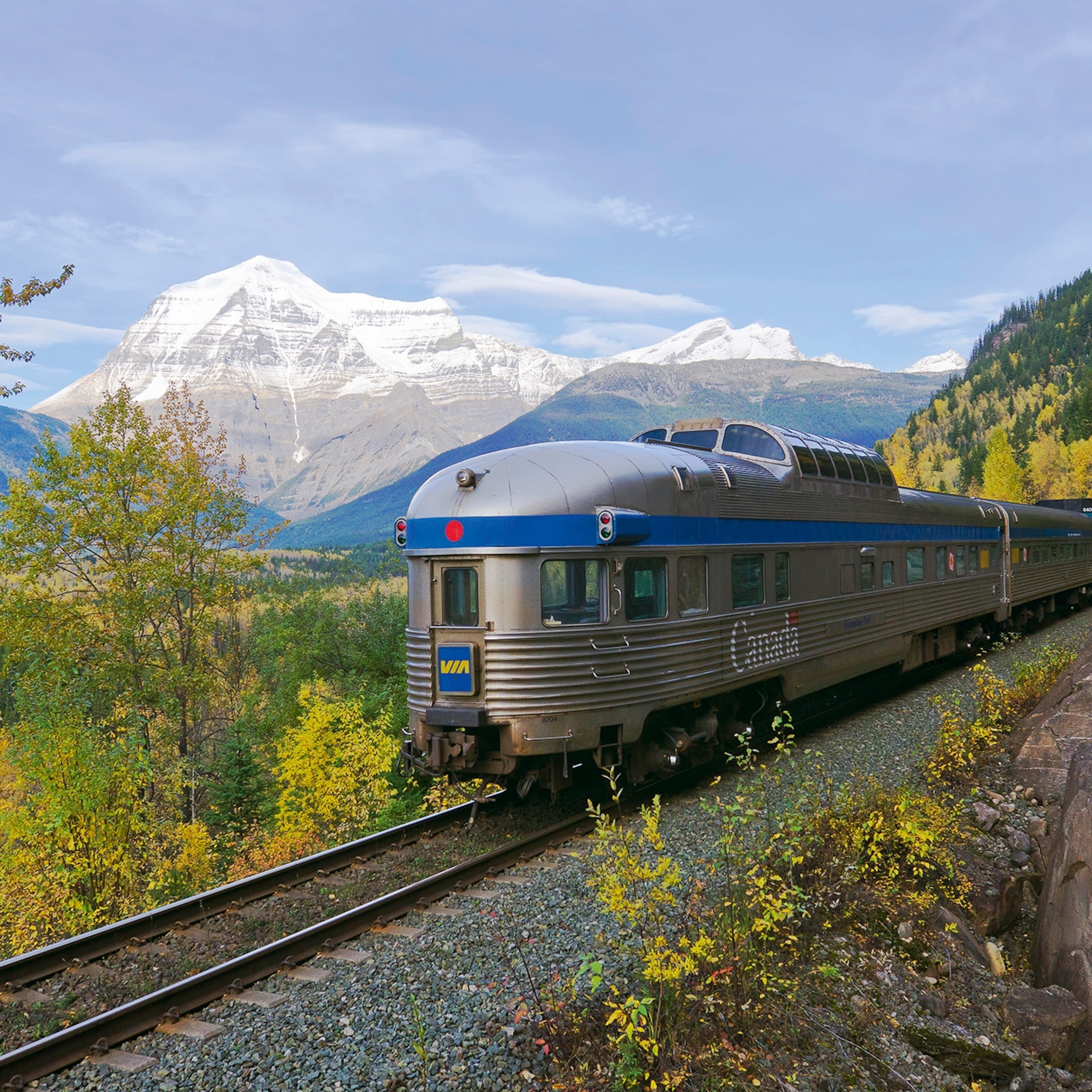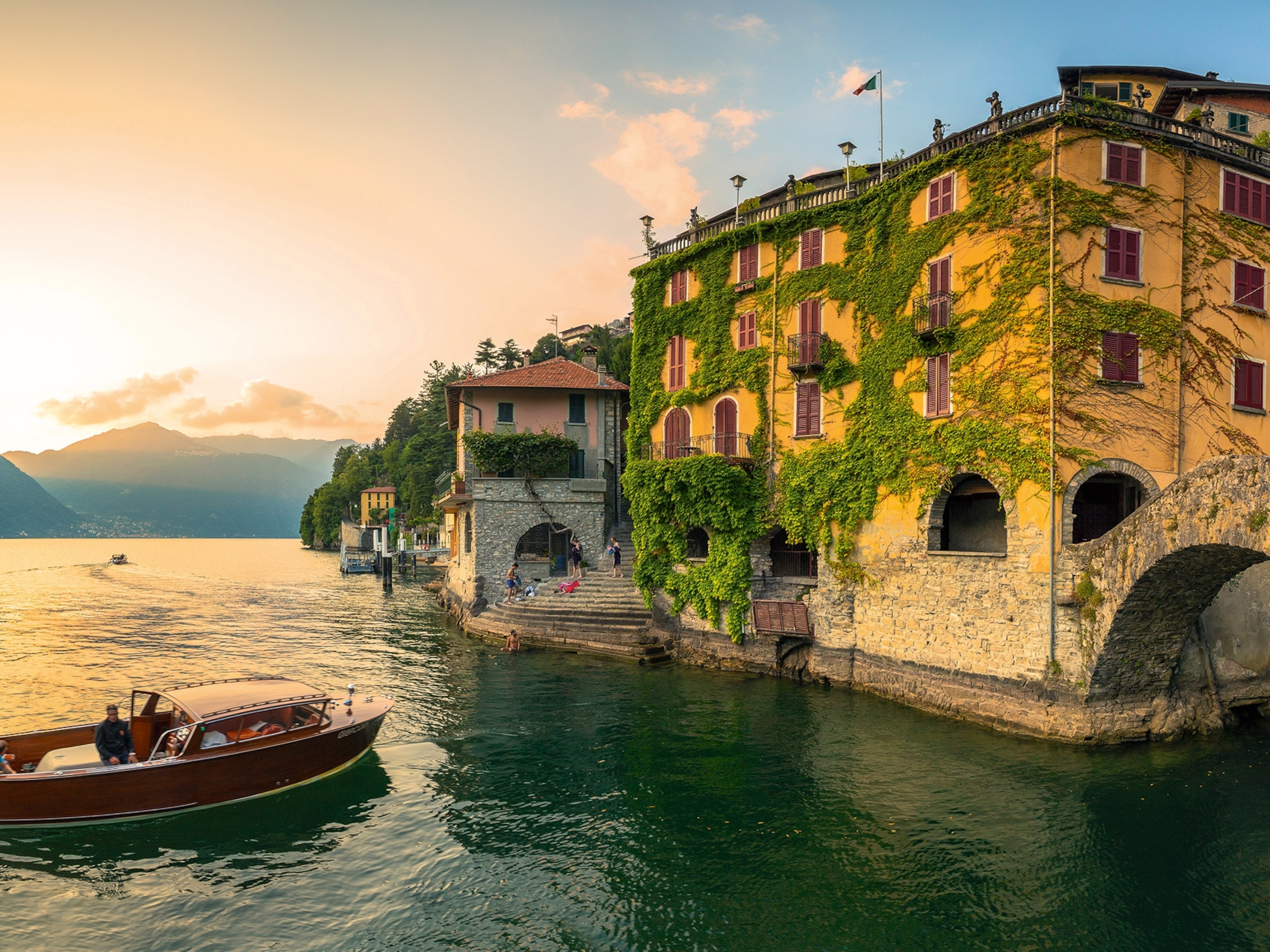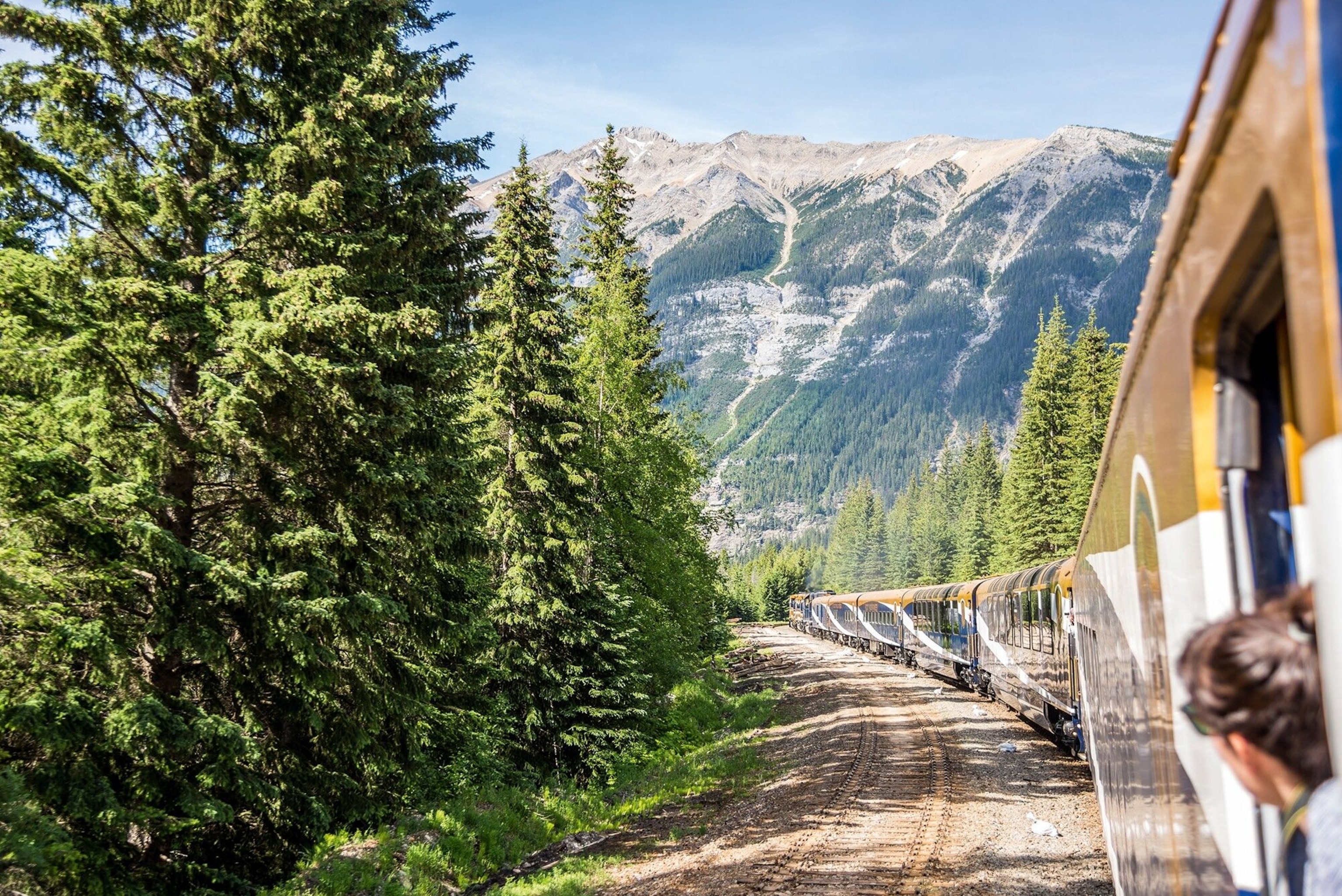
Ride the rails through the Rocky Mountains, from Vancouver to Banff
All aboard the Rocky Mountaineer, its dapper carriages climbing leisurely from multicultural Vancouver to the peak-ringed resort of Banff. The two-day route, following historic and hard-won train tracks, reveals supersized summits, pioneering settlements.
22 Feb 2021, 10:29 GMT — Doris might not be as young as she was, but she really knows how to wave at passing trains. Feet apart, hands whirring above her head, a few blown kisses for good measure. She’s standing on her porch in the tiny lakeside settlement of Canoe, greeting the Rocky Mountaineer as it gleams along the tracks. Doris’s enthusiasm, quite honestly, is enough to shame a preschooler. For years, this Canadian and her dog — a loll-tongued Shar Pei named Cedar Bear — have taken it upon themselves to step outside their front door and greet the train whenever it passes, earning minor celebrity status in the process. On board, our attention diverted from our eggs Benedict and coffee, we lower our cutlery and wave back. It all feels rather regal.
In fairness, the Rocky Mountaineer is the kind of sight that warrants a salutation. Known for its high-comfort jaunts through the shapeliest parts of western Canada, the train cuts a dapper blue-and-bronze figure on remote rural lines more accustomed to the clatter of freight cars. Three decades have passed since the tourist service first rumbled out of Vancouver and into the mountains, during which time the brand has gained serious cachet. Its reputation — thanks in no small part to the sky-spearing spectacle of the Canadian wilderness — is now that of rail royalty.
But first things first. Like a cloned action hero, there’s more than one Rocky Mountaineer. Using a fleet of nine locomotives and more than 50 liveried carriages, it operates four different routes around the Pacific Northwest, often concurrently. Trains run from mid-April to mid-October, trundling through epic, eagle-flown landscapes at a restrained average speed of 30mph. Sensible, really; they’re not the sort of journeys you want to rush. I’m making a trip along its flagship route, billed as the ‘First Passage to the West’, which takes two days to travel from Vancouver to the peak-ringed resort of Banff, losing itself among the region’s super-sized summits and valleys. Grizzly bears and moose lie patiently in wait, ready to emerge from the pinewoods as we roll past. Possibly. You can’t blame a man for hoping.
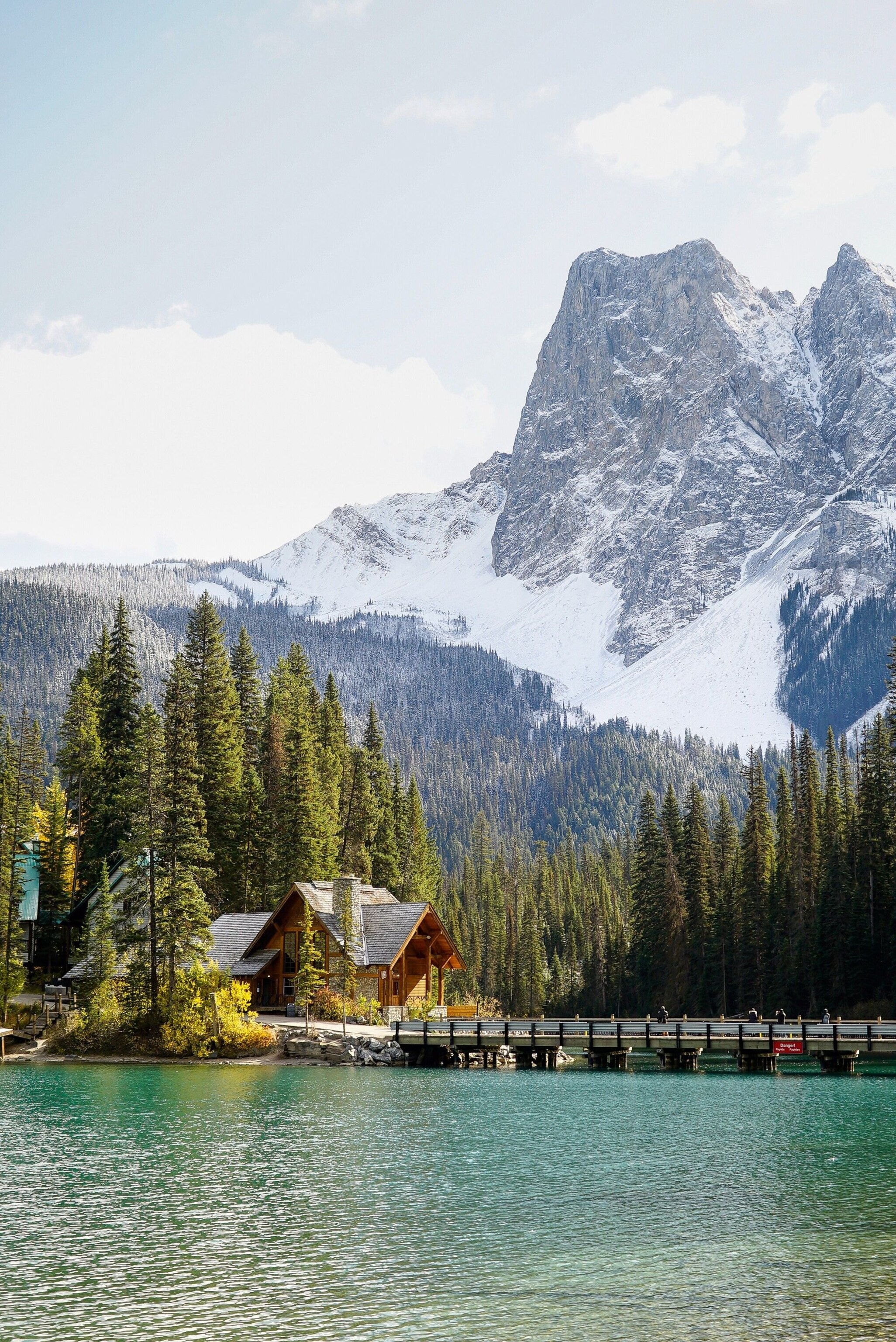
None of its trains are sleeper services — the journey I’m making breaks for the night in the former fur-trading outpost of Kamloops — but all four routes have the very real advantage of beginning or ending in Vancouver, a self-confident, multicultural city with the unmistakable air of somewhere on the threshold of the great outdoors. Here, green summits busy the horizons, ships ready themselves for Alaskan cruises and travellers pore over guidebooks in ramen restaurants.
“We’re on the edge of the world map,” one Robson Street barman tells me. “That feels pretty good these days, let me tell you.”
Arriving three days before my train sets off, I follow local advice and spend my time beetling around the city by bike, spotting seals offshore and watching floatplanes buzzing in from the islands. It’s a fine place to linger, Vancouver. But the railroad is calling, and the day of departure begins early. By 7am, under brightening West Coast skies, around 700 passengers have filled the warehouse-sized Rocky Mountaineer terminus, not far from the Downtown area. It’s immediately clear that the operation will be a slick one. A grand piano is being played while people browse the gift shop, trying on fleeces for size. The tinkling halts only for a speech by the train manager and a tune from a ceremonial piper.
We’re then ushered en masse to the platform, where carriages are split between SilverLeaf Class (spacious, with meals served at your seat) and double-decker GoldLeaf Class (more spacious still, with a glass-dome coach above a separate dining area). All of them look as if they’ve been polished for months. This is no workaday commuter express.
I make my way to one of the GoldLeaf cars, which I later learn were built in Germany then floated down the Panama Canal to reach Vancouver. The carriage is precision-moulded and totem-pole tall. Its seats are wide and deep, with adjustable heating. “Welcome. We’re very excited to have you here,” announces onboard host Brandon, wandering the aisle with a microphone in the manner of a compere warming up a cabaret audience. We pull away to see a row of uniformed staff lined up on the platform to give us a choreographed send-off. I count 21 of them. You don’t get that on the 7:40 from Watford Junction.
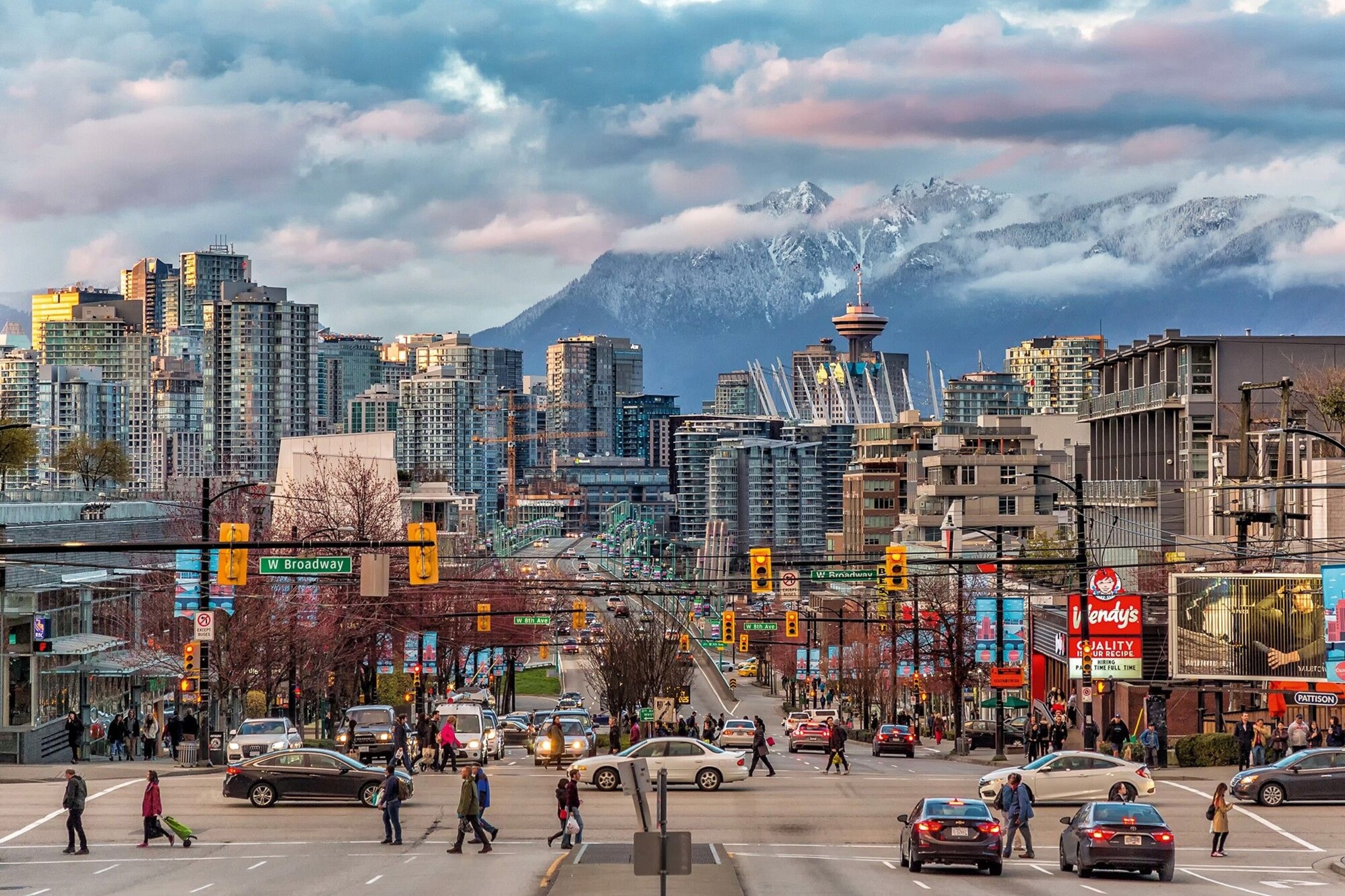
And so it starts. Clackety-clack, clackety-clack. Warm cinnamon scone? Ooh, please. Orange juice and peach bubbly? Well, why not? A total of 560 miles of track stretch between Vancouver and Banff, crossing some of the grandest natural scenery in North America. The city outskirts are all wreckers’ yards and industrial estates, but the promise ahead is of waterfalls and canyons, lofty snowlines and fearsome alps. For us passengers, the emphasis is on passivity. The windows are colossal. All that remains for us to do once settled in is to fiddle with the seat controls until we’re contentedly reclined, then it’s just a case of sitting back and soaking it all up.
Laying the foundations
On 7 November 1885, shortly before 9.30 in the morning, the last iron spike of the Canadian Pacific Railway was driven into the chilly British Columbian earth. It marked the completion of a railroad that stretched across the entire continent, an extraordinary east-west artery that had hurdled rivers, spanned prairies and tamed wolf-patrolled forests.
The western section, where the Rocky Mountaineer now roams, represented the most superhuman engineering task of the lot. This was due, of course, to the majestic but unavoidable presence of the Rockies. The contractors of the day made use of dynamite, horses and steam-powered drills to forge a route, although at the core of the project was a workforce of more than 10,000 Chinese labourers, conscripted to build an iron road through the mountains on a dollar a day. Accounts of the project make for grim reading and include tales of freezing conditions, rampant scurvy and fatal accidents in godforsaken gullies. The work, however, meant that Canada was never the same again. The line revolutionised cross-country trade and opened up the west of the nation to new waves of settlers. It took little time, too, for the powers that be to recognise the world-class potential of the Rockies as a visitor destination. “If we can’t export the scenery,” said William Van Horne, the then president of the Canadian Pacific Railway, “then we’ll have to import the tourists.”
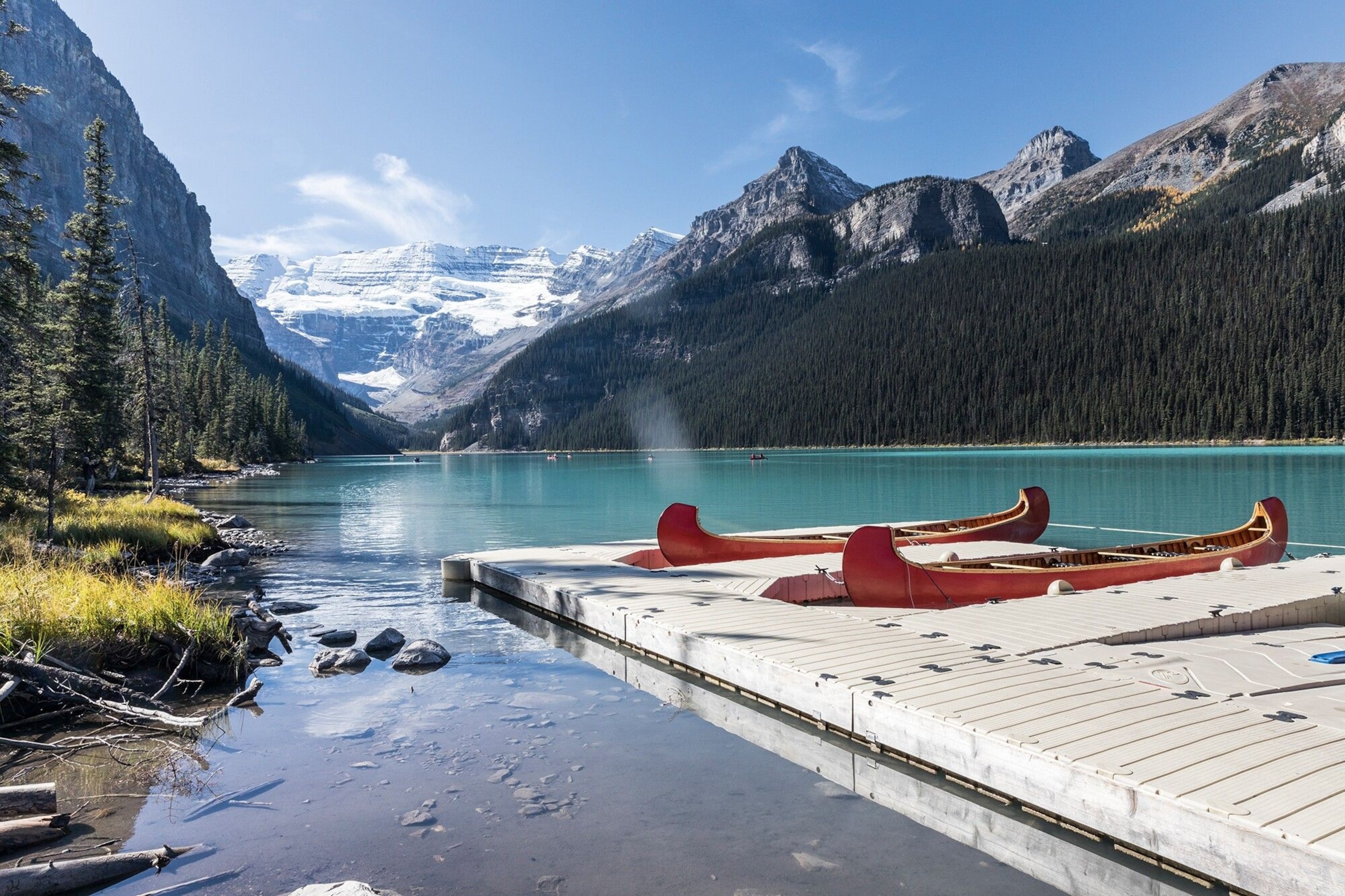
And tourists came, with many of them arriving by rail. Banff National Park was established the same year the train line was finished, becoming the first protected area of its kind in the country’s history. In its bid to draw discerning sightseers, the railway company built luxury hotels, established hiking trails and even hired a team of Swiss mountain guides — widely regarded at the time as the most trusted alpinists. Visitors came to experience the elemental beauty of the outdoors, the stupefying scale of the landscapes and the thrill of the wildlife. In those respects, not much has changed.
“Bear!” shrieks a man at the next table, almost upending a glass of Merlot in the process. Every head in the dining area swivels wildly. On a train, each split second matters. Where? Which way? How many? But the bear has gone, swallowed up by the sagebrush, invisible to all but a smug few. We settle down again to lunch, peering out at the hills and watching the forests roll out to the distance.
One fact I hadn’t foreseen (although closer perusal of the map would’ve made it obvious) is that it’s not until day two of the journey that the Rocky Mountaineer enters the Rockies. Day one, however, tees things up in style. We ease through the fertile Fraser Valley, with the salmon-rich Fraser River thundering past in the opposite direction.
We nose through high-cliffed canyons and dark woods of Douglas fir. And we cross semi-arid desert, where yellow grasslands unfurl to the back of beyond. From 11.30 in the morning onwards, with remote towns scooting by, the scenery begs to be stared at. Our carriage’s hosts, Brandon and the equally well-drilled Rob, wear matching waistcoats and offer running commentary, complete with actorly flourishes. They spintales, answer questions and ferry drinks to seats. For us passengers — mainly a mix of Brits, Australians and Americans — a typical hour might evolve as follows: gaze out of the window while listening to an account of local First Nations history; successfully spot an elk lurking in the woods; wander down to the open-air section at the rear of the carriage to feel the cool green breath of the land and see a bright blue Steller’s jay arrowing out of the trees; return to seat, well exerted, for wine and nibbles; repeat.
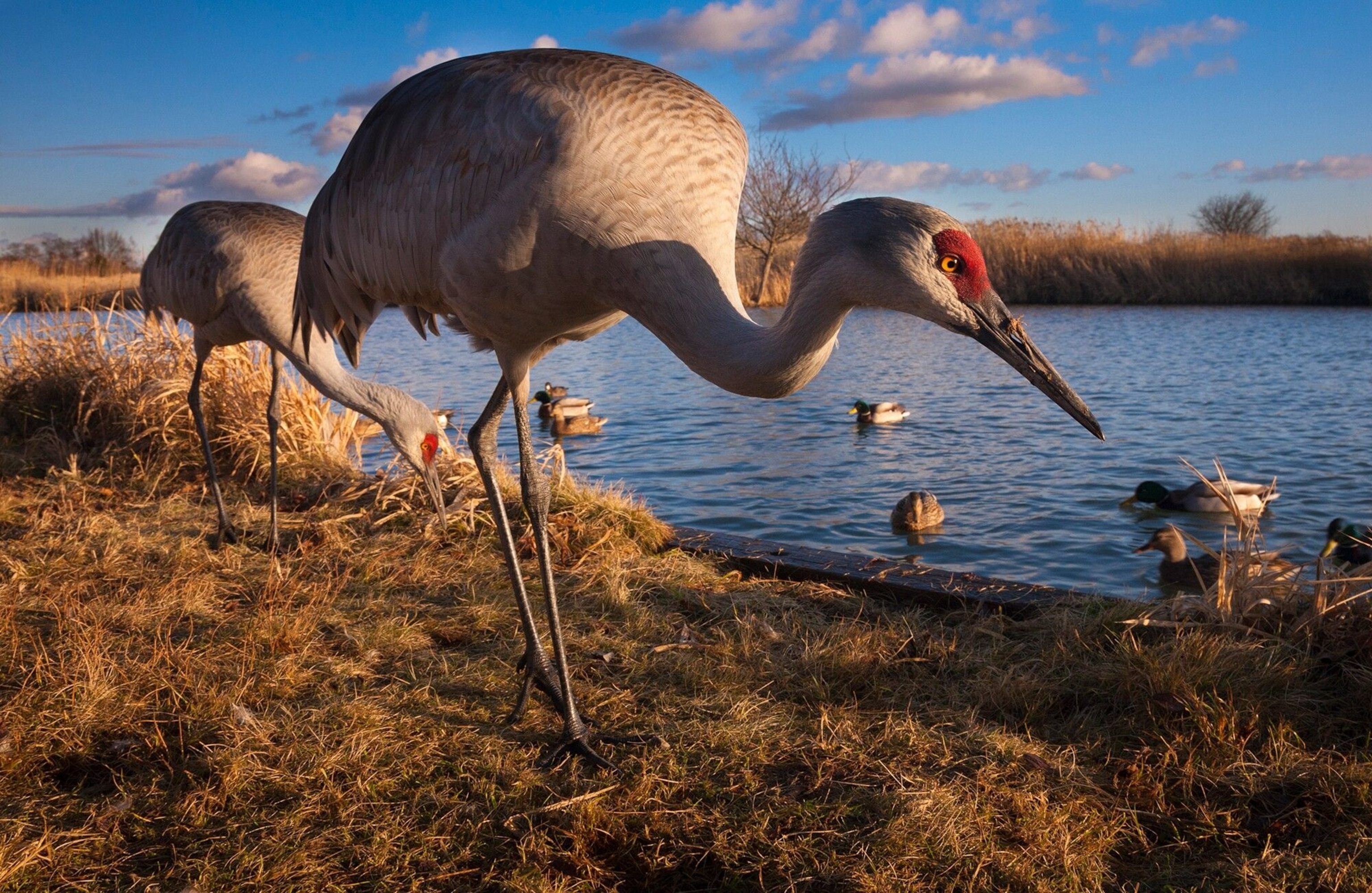
The carriages are configured so that all seats face forward. In GoldLeaf class, they’re are also remarkably high up, granting the kind of vantage point you might get from the top of a London bus. Meals are done in shifts, with half the carriage invited down to communal tables of four, followed some time later by the other half. Decor is clean and contemporary — no gilded Orient Express trimmings here — and the food, bearing in mind we’re on a train, aims high.
“We have three chefs in each car,” executive chef Daniel Stierhof informs me after lunch on the first day. “Ninety-five percent of what we serve is cooked on board. We try to stick to local produce.” Personally speaking, I’ve never tried preparing Pacific salmon or a medium-rare Alberta steak on a moving train, but I imagine it has its challenges. The drinks are easier. By midafternoon, the in-seat orders for G&Ts and pale ales are in full flow. The carriage takes on the feel of a rolling drinks party, with time in the open-air section the equivalent of retiring to chat in the kitchen. Conversation eddies around the train.
The scenery, meanwhile, continues to astound. The views are backdropped by clenched-fist mountains, the plains a leathery brown. There are flat-topped bluffs and dragon-spine hills. The act of horizon-gazing becomes hypnotic. From outside, I spot fleeing deer and two bald eagles soaring on straight wings. When we reach Kamloops, it’s bathed in evening light. The town is uncomplicated, with heritage facades and a smattering of bars and restaurants, but in truth there’s little chance to see much.
“Tomorrow,” says Brandon, as we head towards our hotels, “the Rockies.”
Head for heights
The Rocky Mountains are a 3,000-mile tract of jumbo geology, beginning way down in New Mexico and reaching an apogee here in western Canada. Raised and buckled over tens of millions of years, the mountains — technically, spanning more than 100 separate ranges — have become some of the most eulogised on the planet. At a somewhat bleary-eyed 6.35am the next morning, we’re on our way towards them, the pink clouds of dawn showing the way.
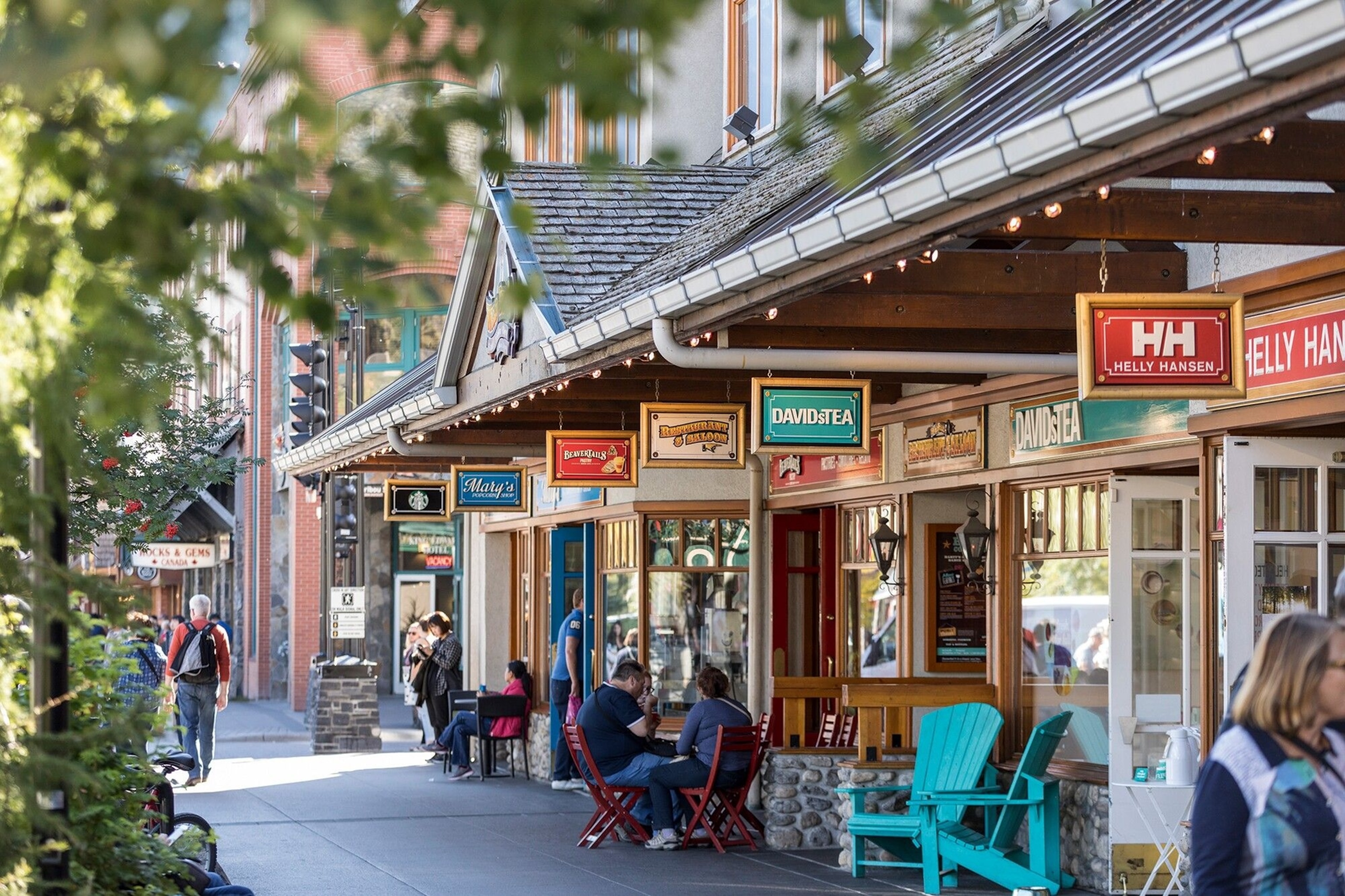
Soon the land is all elbows and shoulders, with giant blades of rock yawning overhead, their angles soaring and serrated. Our train has halved in length at Kamloops, sending a dozen cars north to Jasper while the remaining 12 make the climb to Banff. It means that our carriage is now bringing up the rear, giving uninterrupted views back along the track. We pass the point where the last spike was hammered in, 135 years earlier. We see osprey nests the size of berry bushes. A never-ending freight train chunters past the other way, its 150-plus containers carrying potash, coal and wheat to Vancouver.
Later that morning, I miss another wildlife sighting: an apparently very handsome black bear that has the temerity to wander into view on the wrong side of the train. By this stage of the journey, however, I handle the event with equanimity. Well, maybe semi-equanimity. The Rocky Mountaineer isn’t about working through an animal checklist. Nor is it a journey aimed especially at rail buffs. More simply, it’s a means of travelling through wild corners of a beautiful country — often well away from roads, on tracks unused by passenger trains — while being waited on 12 hours a day. Which is, of course, highly enjoyable.
It won’t be for everyone. Grumbles? One or two. Luggage is transported by truck, which seems a needless nudge-up of the carbon footprint, and I overhear a couple of moans about meal timings. On occasion, too, the experience skirts close to being over-curated. When the train emerges from the Rockies’ famous set of spiral tunnels into a thunderous mountain panorama, the PA system starts piping out Louis Armstrong’s What A Wonderful World. It perhaps doesn’t take a grouch to think that views like this can speak for themselves.
“I’ve already taken about a trillion pictures,” laughs an American passenger over lunch, showing me his phone. Over the next few hours, he doubtless takes a trillion more. The Rockies are now here with a vengeance. Mount Field is a savage, snow-dusted pyramid flanked by towering neighbours. Kicking Horse Canyon is a waterfall-fed showstopper with glacial, ice-blue currents. Yoho Valley is preposterous — a giant bowl of land with silvery peaks and thick, forest-covered slopes. Brandon and Rob have a busy afternoon with the drinks.
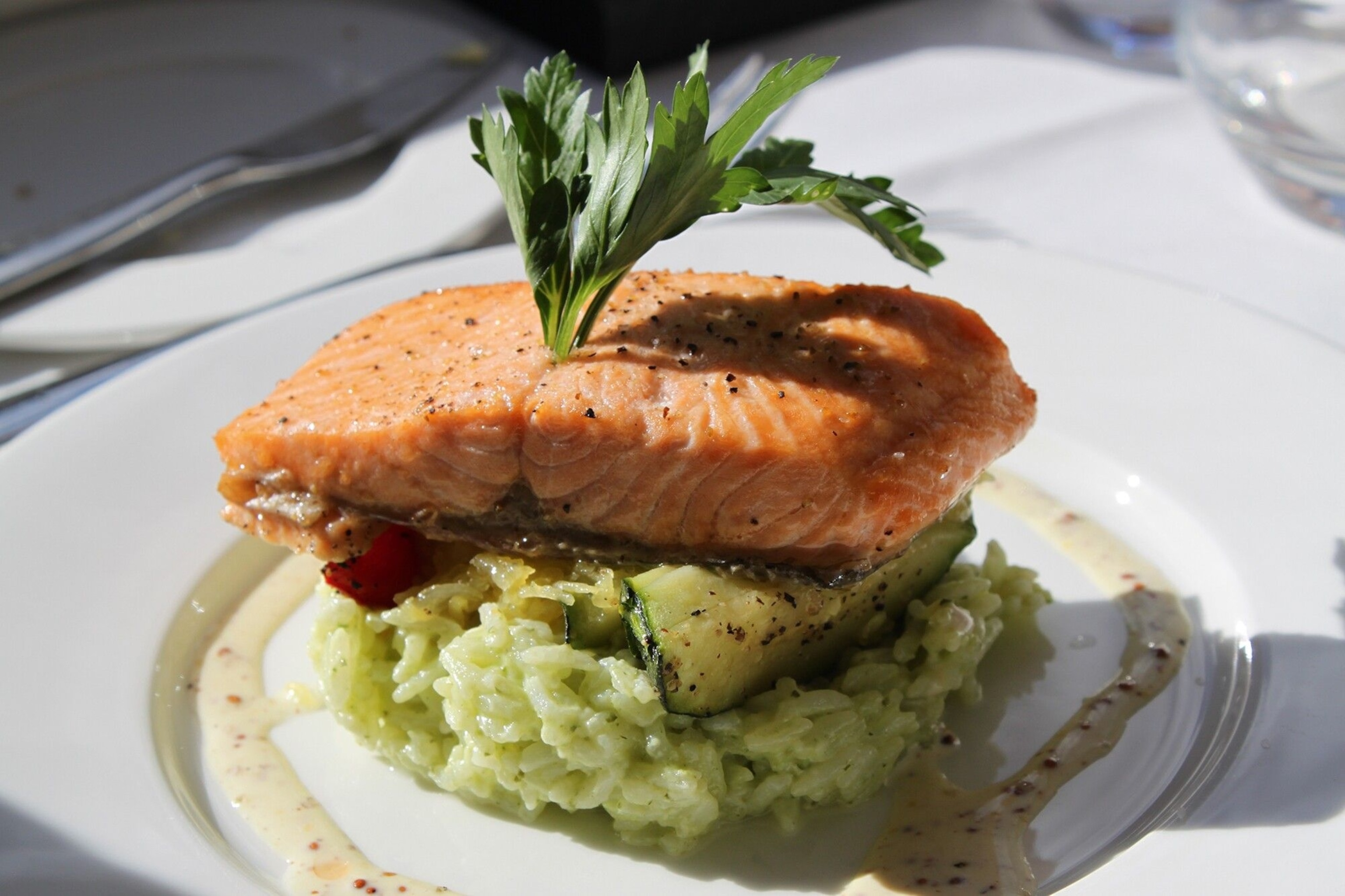
Just before 6pm, we cross the 5,335ft-high Continental Divide, the route’s highest point. Gauzy cloud covers the higher summits. We pull into Banff in near darkness. The journey itself may be over — tragically, no more dishes of nuts or pre-meal hot towels — but by way of compensation we’ve been deposited in one of Canada’s most celebrated resort towns.
It makes the next two days a joy. First up is a trip to nearby Lake Louise, which was drawing tourists even before the first chalet was built here in 1890. The region’s indigenous inhabitants had been aware of its amphitheatrical loveliness for some 10,000 years. But if Lake Louise has now become a classic Instagram magnet, the timeless allure of the Rockies really becomes apparent from the mountains above Banff itself.
The 360-degree view from Sanson’s Peak, reached by a gondola ride and a shortish, sharpish hike, is a staggering rhapsody of pine, rock, river and snow. Each mountain seems to stand alone in its own space, giving the impression of separate exhibits in some God-given gallery, rather than a massed chain. Vintage advertising material for the Rockies called it ‘50 Switzerlands in one’. Here, you can see why. I finish the day wallowing in Banff Upper Hot Springs, looking out at Mount Rundle and feeling incredibly small.
Back, finally, to Doris. A couple of years ago, when her tireless trackside greetings had long been a feature of the journey, the head honchos at the rail company decided to invite her to experience the route in person. The trip was duly arranged, and when the train rolled past her house, Doris looked out at her porch to see a team of uniformed Rocky Mountaineer staff waving back. Cue tears all round. This is, above all, a train that prides itself on its service levels and scenery — neither of which are easy to fault.

Rocky Mountaineer's two-day First Passage to the West, from Vancouver to Banff, starts from £1,364 per person in SilverLeaf Service and from £1,810 per person in GoldLeaf Service. This price includes two days on board the Rocky Mountaineer, some meals and one night in a hotel in Kamloops. Various Covid-19 safety precautions are in place, including pre-boarding health screening and daily disinfecting. Onboard filtration systems circulate fresh air, and guidelines from the World Health Organization are followed.
Getting there:
Air Canada and British Airways offer direct flights to Vancouver from London. Westjet, Air Canada and British Airways have direct flights to Calgary, the nearest international airport to Banff. There are shuttle services from Banff to Calgary International Airport. Average flight time: 9h.
When to go:
The Rocky Mountaineer runs from mid-April to mid-October, coinciding with the warmest months of the year in the region, which reach highs of 23C. As well as the First Passage to the West route, other options are Journey through the Clouds (Vancouver to Jasper via Kamloops), Rainforest To Gold Rush (Vancouver to Jasper via Whistler) and Coastal Passage (between Seattle and Vancouver).
Where to stay:
JW Marriott Parq Vancouver
Mount Royal Hotel (Banff)
